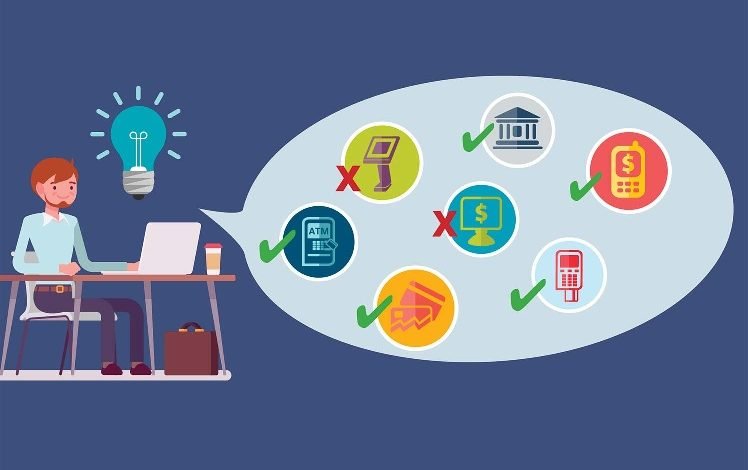The Role of Payment Analytics Companies in Fraud Detection and Prevention

Fraud detection is an integral part of the payments industry. It helps protect both merchants and customers from financial losses.
Identifying unusual patterns in data can help prevent fraud attempts like account takeover. It also provides real-time risk detection and enables companies to implement the proper protection without unnecessarily complicating the client experience.
Predictive Analytics
Predictive analytics is a set of machine learning techniques that leverage historical data to predict future outcomes. Businesses can automate actions triggered by transactions exceeding an acceptable risk threshold using predictive analytics. This enables businesses to take a proactive stance against fraud, reducing losses and improving customer trust and security in the digital ecosystem.
The predictive analytics process begins with collecting and integrating data, ensuring that the data is consistent and complete. The next step is to prepare the data by performing functions like normalization, feature engineering, and feature selection to improve model accuracy. Once the model is ready, it can be deployed and monitored to facilitate real-time response. This helps detect suspicious activity and prevents fraud from occurring in the first place.
Moreover, predictive analytics can help analyze other business metrics, such as chargeback rates, which indicate the effectiveness of post-purchase customer experience policies and processes. This enables merchants to design strategies that reduce chargeback rates and improve revenue growth and profit margins. Businesses with a multi-acquirer setup can also benefit from payment analytics by creating a consolidated dashboard that provides insights on each acquirer’s performance, such as transaction success rate and reasons for unsuccessful payments in different currencies.
Machine Learning
Machine learning can take the load off fraud detection teams, freeing them up to investigate and analyze alerts with incredible speed, accuracy, and fewer false positives. However, it is essential to note that this does not replace human intervention.
ML-powered solutions improve as they learn, processing new data and unmapped data points that may be critical to a particular fraud case. These systems can detect and block fraudulent actions quickly based on several factors, including transaction frequency, associations with other high-risk accounts, and more subtle parameters, such as the time it takes for a user to reach product pages.
ML models are also highly portable and can be seamlessly integrated into operational systems. For example, some systems can be run automatically with little or no human supervision – known as black box machine learning. Other solutions offer readable suggestions you can accept, update, or reject based on your risk rules. This way, you can ensure your ML model works effectively without extensive human intervention.
Preventing Fraud
Payment analytics helps businesses avoid fraud, which can cause substantial financial losses and damage brand reputation. It enables companies to take measures to prevent fraud before it happens, such as implementing anti-fraud policies and procedures and instituting multi-factor authentication. It also involves analyzing transaction data for potential anomalies and using risk-based software and risk management strategies to stop fraud before it occurs.
Aside from preventing fraud, payment analytics can also help improve customer experience and sales. It can provide insights into purchase behavior patterns, which allows companies to offer tailored products/services and establish loyal customers. It can also reveal how to optimize invoicing and collections processes and forecast cash flow and expenses.
Moreover, payment analytics companies can provide valuable intelligence on market conditions that affect business profitability and growth. For example, they can show which market segments will most likely see sustained revenue growth, enabling companies to adjust their marketing strategies appropriately. It can also help them stay ahead of changing supply chains, legislation, competition, and other factors that impact their bottom line.
Big Data
Fraudulent activities like e-commerce scams, cybersecurity threats, identity theft, forgery of bank checks, money laundering, tax evasion, fraudulent insurance claims, financing fraud, and others pose significant risks to consumers and businesses in the financial industry. As such, organizations are increasingly focusing on developing advanced fraud detection models and strategies that use Big Data analytics and other cutting-edge technology to identify suspicious behavior in real-time.
This data analytics system organizes, maps, and normalizes complex information for practical analysis. It helps companies detect fraud trends by identifying anomalous patterns and using geolocation to assess the risks associated with specific transactions, customers, or regions.
For businesses with multiple locations or an omnichannel presence, big data analytics can help them track payments by location and region to determine which types of equipment should be purchased for each location. This can help them avoid unnecessary expenses and ensure customers can use their preferred payment methods. It can also help them improve cash flow and credit management and reduce the risks of non-payment by suppliers.
Artificial Intelligence
Artificial intelligence is a potent weapon for companies to increase revenue growth and foster client loyalty. Businesses can use it to find patterns and trends in transaction data, enabling them to make better decisions regarding their marketing and sales initiatives. It can also help detect and prevent fraud by identifying anomalies in customer behavior, like a sudden increase in fraudulent activity or a pattern of suspicious purchases.
Fraud is a serious threat to merchants and can be carried out in various ways, including credit card fraud, phishing, identity theft, and business email compromise (BEC). Using AI, businesses can detect transaction anomalies and flag them for investigation. This can help prevent fraud, reduce processor fees, and elevate customer satisfaction.
Payment analytics can also monitor and track critical metrics like chargeback rates, allowing businesses to take immediate action to mitigate losses or improve post-purchase customer experience. However, using AI with a thorough risk assessment and governance plan is essential to avoid misuse and data misappropriation and ensure accuracy and explainability.



